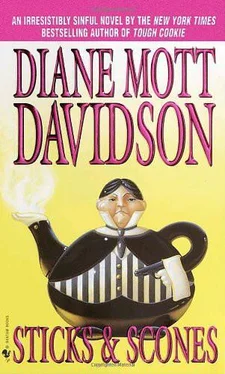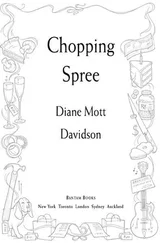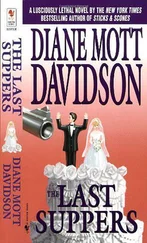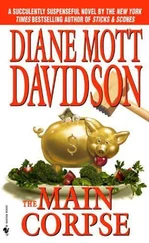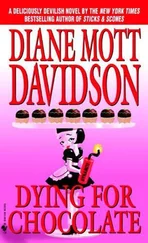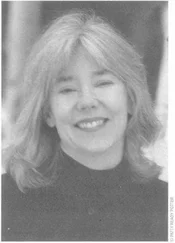My mind backtracked to Tom’s words about her. Don’t think about it, I warned myself. He’d been shot. He was out of his head.
Still, as the medical helo whipped into the air, my brain again supplied Tom’s shaky, apologetic tone. I don’t love her! What could he have been thinking? That he was going to die, and that I would find something incriminating from before we’d met? Like what? Love notes? Hotel bills? Or was his concern more recent? Had he compromised himself with a hooker in Atlantic City? Had she threatened to give me a ring?
Stop. Stop, stop, stop.
I watched the medical helo recede into the sky.
Less than ten minutes later, the sheriff’s department chopper took off with me in it. Below us, on the other side of the creek, police officers continued to swarm through the trees of Cottonwood Park. The corpse was still in the water; crime-scene techs were videotaping and combing the site. Half a mile east of the scene, where Fox Creek flowed down into the Cottonwood, cops had stopped traffic. On the south side of the road, on the hill far above Cottonwood Creek, rose the castle. Its moat glittered in the morning sun like a medieval vision. Had the police notified the Hydes of what had happened? Or were they still expecting me to be there to cater the lunch?
The helo swept eastward. The castle estate adjoined an enormous cattle ranch, and the noise of the copter drove dozens of steer below us into a brisk trot. To the south stretched acres and acres of pine trees.
I glanced back at Cottonwood Creek, where Andy Balachek’s receding body was a bright spot in the dark water. In the county park, a cluster of uniformed officers had stopped at a dirt road that cut through the expanse of trees. They were studying something on the road. Shells from the bullets fired at us? Footprints in the snow? Tracks from a vehicle?
I turned and stared at Highway 203, now receding from sight. Had someone shot out our window, then somehow followed me to the castle? Had that same person murdered Andy Balachek and dumped his body in the creek, where I would be almost certain to discover it? Had that person then waited across the road, to try to shoot me? Or had Tom been his target all along?
I turned back, determined to focus on Tom. In the cockpit, the pilots’ mouths worked as they spoke into headsets. Out the window, the endless spread of forest fell away beneath us. I closed my eyes and prayed for Tom.
But thoughts intruded. Either my mind was struggling to make sense out of all that had happened, or my soul was trying to generate hope. What had Tom told me about gunshot wounds? It depends on the weapon. If someone shot a high-powered rifle at your shoulder, goodbye shoulder. If it was a low-powered rifle, something might be salvaged if a bone hadn’t been hit, or if a major blood vessel hadn’t been opened up. If a bullet tore open the subclavian vein, you could bleed to death before you reached a hospital. Would they give blood in the medical helo? I didn’t think a Flight-for-Life IV could contain anything besides glucose.
The helo pilot, who looked too young to be shaving, much less flying a helicopter, murmured into his radio, then swerved the aircraft to the right. Unless I was extremely disoriented, we were heading south-by-southeast. This was not the direction to the base for Flight-for- Life: Saint Anthony’s Hospital in Denver.
“What’s going on?” I yelled over the whir of the helicopter blades.
“Saint Anthony’s is overloaded,” the pilot hollered back. “They’re on Divert. The medical helo is going to Southwest Hospital, so that’s where we’re heading. Southwest has a new trauma center that can handle this.”
I bit my lip painfully, anxious to get Tom somewhere. I knew Southwest Hospital, across from Westside Mall in the southeast corner of Furman County. It was where Marla had been taken when she’d had her heart attack; afterwards, she’d donated money for a new coronary care wing. Southwest also belonged to the same chain of Denver hospitals in which John Richard had once worked.
I veered away from that thought as we swooped over one of the residential areas in the foothills, where houses sat higgledy-piggledy along a winding dirt road. Swing sets shuddered in the cold wind coming off the higher elevations. Week-old, wind-carved snowmen newly dusted with white indicated the presence of happy families.
In the not-so-happy family department, where was John Richard at this moment? I wished I knew. Could he possibly have shot Tom? Would he have? Yes, oh yes, no matter what Arch said about his father not being good with a gun. My head ached as I remembered an incident from when we were still married. The tale had come from a nurse at Cityside Hospital, one of the places where John Richard had done deliveries. Her voice trembling, she’d called me to confess she’d repeatedly rejected John Richard’s advances. When she’d protested to Doctor that she was married, she told me, the Jerk had calmly replied, How about if that troublesome husband of yours was out of the way? I didn’t know why the nurse had phoned me with this message. What did she think I was going to do? My advice had been that she put as many miles as she could between herself and Dr. Korman. Not long after, another nurse told me that the object of John Richard’s affections had quit her job and moved to a hospital out of state.
I couldn’t see the medical helo, but I knew it was in front of us. More knowledge I’d gleaned in Med Wives 101 came up like a fresh computer screen. The human body is mostly water. Even a bullet that only goes through soft tissue causes massive damage, beginning with the shock wave to the system known as the hydraulic effect.
Were the medics treating Tom for shock? Of course. Had I done enough to compress the wound? My teeth chattered. I grabbed a silver space blanket one of the pilots had put on the seat beside me. I was so cold. How to avoid shock? Stop feeling and start thinking.
But I couldn’t. It was too painful. I saw Tom’s body jerk back. Watched him bleed. Heard him say, I don’t love her. I’d endured years of infidelity from the Jerk. But this was different.
Incredibly, I still had my cell phone. I drew it out and stared at it. Could I use it in the helo? Should I call Elk Park Prep? Should Arch be told? I looked down. We had left the mountains and were swooping over the Hogback, an ancient, jagged geological formation that rose between the mountains and plains. The Hogback had fascinated generations of elementary-school science students. But the rocks still screwed up any cellular communication you tried to make while crossing them. Plus, making a cell call was undoubtedly not allowed in the helo, as it wouldn’t be in the hospital. So: Once I knew Tom was being taken care of, I’d find a pay phone, call Marla, call the Hydes, call the church. All crises in
due time, my mind numbly supplied.
The helo was just starting over the flatlands that stretched toward Denver. We whump-whumped over a development, row after row of gray-and-beige tract houses. Ahead, Westside Mall loomed. Beyond it, Southwest Hospital and its crammed parking lot shimmered in the sun.
The police helicopter hovered near the mall. From our vantage point, the hospital landing pad was in full view. It looked as if an emergency nurse and orderly were meeting the medical helo. I swallowed and watched the flight nurses unload Tom hot, that is, with the helo blades still going. Then I saw Tom, still on the backboard, being transferred onto a gurney and wheeled away.
First the trauma team, then a hot
unload. You only unloaged hot when you thought you were going to lose somebody.
What felt like an eternity but probably was not more than twenty minutes later, after the police chopper had landed and the hospital security officer had escorted me to a bathroom to clean Tom’s blood off my hands and arms, I arrived in the ER waiting room. I was told the ER doctor would come out to talk to me as soon as possible. A few moments later, Tom’s new captain, Isaac Lambert, loomed next to me. Awkwardly, I got to my feet.
Читать дальше
